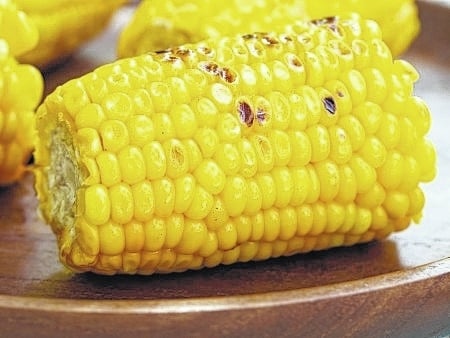
Question: We really enjoyed having corn on the cob on July Fourth. One of my children asked why we don’t have it more often. I explained that corn is a starchy vegetable and we shouldn’t eat too much of it. But it got me thinking, how much is reasonable?
Answer: Yes, corn is a starchy vegetable. But it’s perfectly fine to enjoy it as part of a balanced diet.
According to the Dietary Guidelines for Americans, anyone 9 years or older should aim to eat 2 to 3 cups of vegetables a day. That equals 14 to 21 cups a week, and the guidelines recommend that 4 to 6 cups a week, or a bit more than one-quarter of all vegetables, be starchy. Besides corn, starchy vegetables include potatoes, sweet potatoes, green peas, lima beans, cassava, plantains, jicama, parsnips and water chestnuts.
Most Americans get plenty of starchy vegetables because we eat so many white potatoes, which account for 80 percent of all starchy vegetable consumption, as well as 25 percent of all the vegetables we eat. That’s a lot of potatoes. While they’re a good source of potassium, and of fiber especially if you eat the skin, consider diversifying your diet and replacing some of those potatoes with other starchy vegetables. Including, of course, sweet corn.
Corn is a good source of folate, beta carotene and thiamin along with other vitamins and minerals, and has more fiber than potatoes. It also provides zeaxanthin, an antioxidant that may protect against age-related eye disease, such as macular degeneration.
One cup of corn has about 145 calories. (One medium-sized ear of corn has about two-thirds of a cup of corn.) But watch the butter and salt, which of course add significantly to the calories and sodium. Using spray butter (the kind in the pump-spray bottle) judiciously instead of spreading on butter or margarine can trim calories and still provide that familiar flavor.
Or, try something different and roast corn on the cob on the grill. Just husk as usual, and then brush the corn with olive oil and place directly on a hot grill. Turn the cobs periodically and cook until the kernels are slightly charred. Instead of using salt, try pepper, garlic, or other herbs and spices for flavor.
As you’re enjoying the traditional summer favorite, take a look at the other vegetables you commonly eat and make sure you’re getting plenty of variety, including dark green, red and orange vegetables as well as beans, such as pinto or kidney beans. The Dietary Guidelines recommend eating a wide variety of produce to get a broad array of nutrients. For more about vegetables, see choosemyplate.gov/vegetables.


